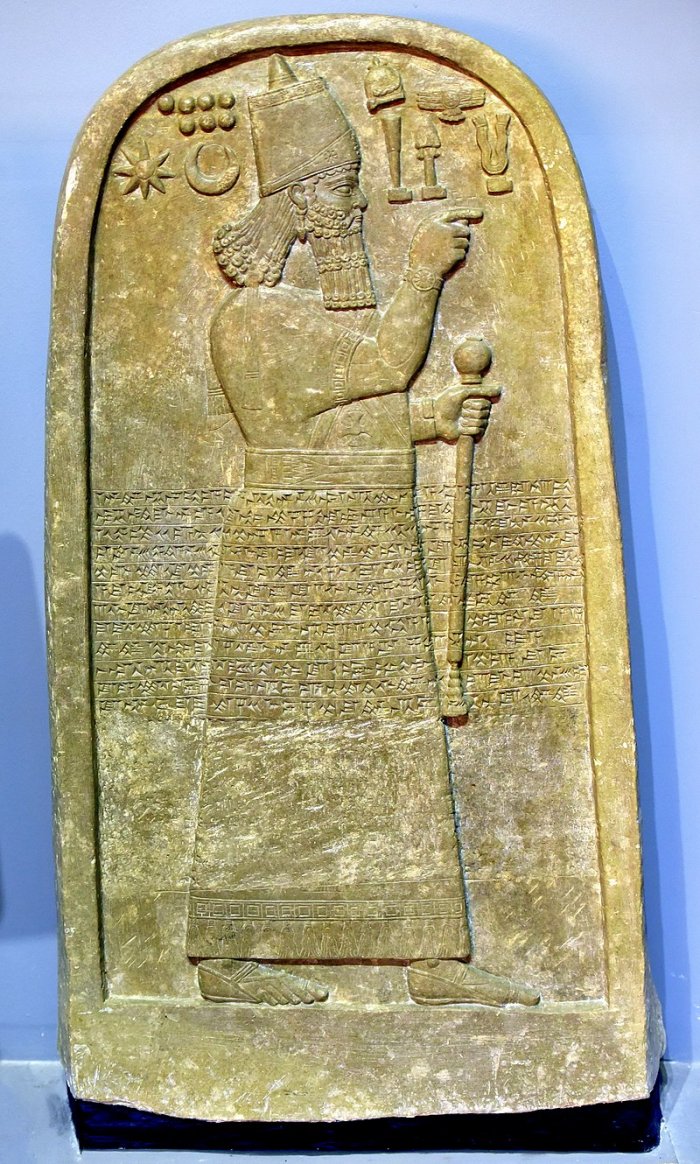Stele Of Tell al-Rimah And Deeds Of Assyrian King Adad-nirari Against Rebellious Kings
A. Sutherland - AncientPages.com - Stele of Tell al-Rimah, dated to 796 BC, is a stone stela from the reign of the Assyrian king Adad-nigari III (810-783 BC) found in 1967 during archaeological excavations at the site of Tell al-Rimah in Nineveh Province, in northern Iraq near Jebel Sinjar.
Stele of Adad-nirari III at the Iraq Museum. Image credit: Osama Shukir Muhammed Amin FRCP (Glasg) - CC BY-SA 4.0
Based on general information, during the reign of Shamshi-Adad V, Shalmaneser III's successor, Assyria's influence in the West significantly waned, and the next monarch, Adad-Nirari III, reversed this trend with solid military campaigns.
It is seen in the Tel al-Rimah stele, which also depicts an image of the king with the inscription carved across his waist and religious symbols placed above him. Though the part of the inscription naming Nergal-fresh was erased after his downfall, it is still clear enough to read.
Made of a single slab of hard grey Mosul marble, the stele was found inside the cella of a small Neo-Assyrian temple beside the podium.
The discovered artifact is in an excellent state of preservation and completion. Its size is 130 cm (height) and 69 cm (width at the base). The stele's front side depicts King Adad-nirari III surrounded by divine symbols.
The lower part has an additional inscription of 21 lines of text. Part of the text (9 lines) was probably deliberately removed in antiquity.
The writing covering the skirt of the king's figure is slightly less than life-size. No traces of paint were visible on the stele when it was unearthed.
In the same shrine, archaeologists also discovered two pairs of lion heads made of softer and lighter limestone, used as column bases.
Adad-nirari, a son and successor of King Shamshi-Adad V, was very young at the time of his accession because his mother, Queen Shammuramat, was highly influential for the first five years of his reign.
Some have identified his mother with the mythical Semiramis from Greek myths; however, many historians confirm the existence of Assyrian queen Shammuramat, wife of Shamshi-Adad V of Assyria and mother of Adad-nirari.
The text on the stele begins with a dedication to the storm god Adad (lines 1-2), after which these will be the name of Adad-nirari III and his genealogy (line 3).
Further described are military expeditions of the king to the West, including the submission of tribute to him by the King of Mari from Damascus, King Joash (Assyrian Iu'asu) of Samaria, and the inhabitants of Tyre and Sidon (lines 4-12).
Some fragments of the text say:
[1] To Adad, the greatest god, powerful noble of the gods, first-born son of Anu, unique, awesome, lofty, the canal inspector of heaven and earth, who rains abundance, who dwells in Zamahu, the great lord, his lord.
[2] Adad-Nirari, mighty king, king of the universe, king of Assyria, son of Šamši-Adad, the king of the universe, king of Assyria, the son of Šalmaneser, the king of the four quarters.
[3] I mustered my chariots, troops, and camps; I ordered them to march to the land of Hatti. In a single year, I subdued the entire land of Amurru and Hatti. I imposed upon them tax and tribute forever.
[4] I received 2,000 talents of silver, 1,000 talents of copper, 2,000 talents of iron, 3,000 linen garments with multicolored trim - the tribute of Mari' - of the land of Damascus. I received the tribute of Jehoash, the Samarian, of the Tyrian ruler, and the Sidonian ruler.
[5] I marched to the great sea in the West. I erected a statue of my lordship in the city of Arvad, which is in the midst of the sea. I climbed Mount Lebanon, and I cut down timbers: 100 mature cedars, material needed for my palace and temples.
Another part of the text (lines 13-20) is the part of the inscription, which was removed later but initially mentioned Nergal-erish, the king's disgraced governor, whose name was removed from the royal monuments. Nergal-erish must have fallen out of favor with the king.
The text was probably dated to 797 BC or later, as one of the titles related to Nergal-erish, is the title of governor of Hindanu (now, Tell Jabiriyah), an Old Babylonian-Neo-Assyrian city (ca 1800-600 BC), which Nergal-erish governed in 797 BC.
The text ends with a curse directed against all who want to remove stele's written curse (line 21).
The site of Tell al-Rimah was occupied in the third millennium BC. Still, it flourished particularly during the Old Babylonian and Mitanni periods of 2000 BC and in the Neo-Assyrian period. At various times, Tell al-Rimah has been linked with either Qatara or Karana, known cities in that area during the second millennium.
The stele is historically associated with ancient Israel because a part of the inscription has Adad-Nirari's boast that he subdued "the entire lands of Amurru and Hatti."
He imposed taxes and tribute upon their leaders. Listed among the kings providing tribute is the Israelite king Joash (later buried in Samaria with the kings of Israel.) Biblical Verses- 2 Kings 13-10–25
Today, the monument is located in Baghdad's National Museum of Iraq.
Written by – A. Sutherland - AncientPages.com Senior Staff Writer
Updated on July 26, 2023
Copyright © AncientPages.com All rights reserved. This material may not be published, broadcast, rewritten or redistributed in whole or part without the express written permission of AncientPages.com
Expand for referencesReferences:
Oates, David. “The Excavations at Tell al Rimah, 1967.” Iraq 30, no. 2 (1968): 115–38
M. C. Tetley, The Reconstructed Chronology of the Divided Kingdom
More From Ancient Pages
-
 Archaeologists Reveal 12 Exciting Finds From The Gjellestad Viking Ship Dig
Archaeology | May 28, 2022
Archaeologists Reveal 12 Exciting Finds From The Gjellestad Viking Ship Dig
Archaeology | May 28, 2022 -
 Ancient Syriac Epitaphs Discovered In Tomb Of Priest Monoha Shed New Light On The Assyrian Empire
Archaeology | Dec 23, 2019
Ancient Syriac Epitaphs Discovered In Tomb Of Priest Monoha Shed New Light On The Assyrian Empire
Archaeology | Dec 23, 2019 -
 Face Of Iron Age Female Druid Reconstructed
Archaeology | Aug 20, 2019
Face Of Iron Age Female Druid Reconstructed
Archaeology | Aug 20, 2019 -
 Enigma Of The Mysterious Ancient Shining Twins – The Cosmos Connection – Part 2
Featured Stories | Jun 8, 2020
Enigma Of The Mysterious Ancient Shining Twins – The Cosmos Connection – Part 2
Featured Stories | Jun 8, 2020 -
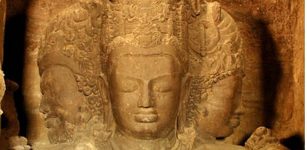 Ancient Complex Of Elephanta Caves In India
Featured Stories | Dec 27, 2016
Ancient Complex Of Elephanta Caves In India
Featured Stories | Dec 27, 2016 -
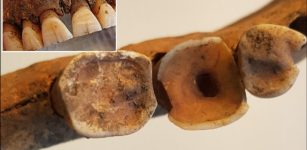 Viking Dentistry Was Surprisingly Advanced And Not Unlike Today’s Treatments
Archaeology | Dec 14, 2023
Viking Dentistry Was Surprisingly Advanced And Not Unlike Today’s Treatments
Archaeology | Dec 14, 2023 -
 Amazing World’s Largest Mosaic Piece Made By 13 Different Ancient Civilizations At Museum Hotel Antakya
Featured Stories | May 9, 2019
Amazing World’s Largest Mosaic Piece Made By 13 Different Ancient Civilizations At Museum Hotel Antakya
Featured Stories | May 9, 2019 -
 Who Deceived Mighty Yuku God Of Rain And Thunder In Beliefs Of Yaquis Of Southern Arizona And Sonora, Mexico?
Native American Mythology | Dec 21, 2023
Who Deceived Mighty Yuku God Of Rain And Thunder In Beliefs Of Yaquis Of Southern Arizona And Sonora, Mexico?
Native American Mythology | Dec 21, 2023 -
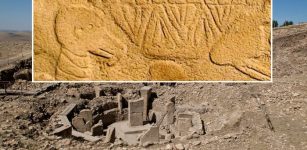 World’s Oldest Lunisolar Calendar May Have Been Discovered At Göbekli Tepe, Turkey
Archaeology | Aug 7, 2024
World’s Oldest Lunisolar Calendar May Have Been Discovered At Göbekli Tepe, Turkey
Archaeology | Aug 7, 2024 -
 Extraordinary Discovery Of ‘Time Capsule’ Belonging To Jules Verne – It May Contain Unpublished Works
Archaeology | Apr 19, 2017
Extraordinary Discovery Of ‘Time Capsule’ Belonging To Jules Verne – It May Contain Unpublished Works
Archaeology | Apr 19, 2017 -
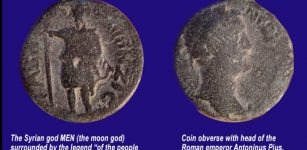 Unique 1800-Year-Old Roman Coin Unearthed On Southern Carmel
Artifacts | Mar 1, 2021
Unique 1800-Year-Old Roman Coin Unearthed On Southern Carmel
Artifacts | Mar 1, 2021 -
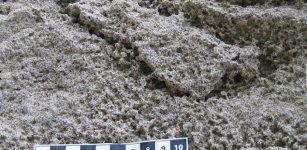 First Neanderthal Footprints Discovered In Gibraltar Dunes
Archaeology | Feb 14, 2019
First Neanderthal Footprints Discovered In Gibraltar Dunes
Archaeology | Feb 14, 2019 -
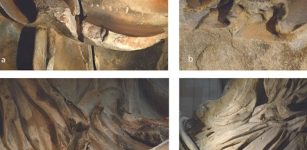 True Colors Of The Parthenon Sculptures Revealed In New Study
Artifacts | Oct 12, 2023
True Colors Of The Parthenon Sculptures Revealed In New Study
Artifacts | Oct 12, 2023 -
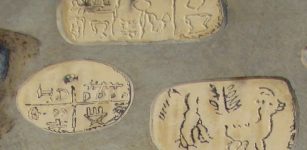 Script On Gradeshnitsa Tablets May Pre-Date Egyptian Hieroglyphs
Artifacts | Mar 9, 2023
Script On Gradeshnitsa Tablets May Pre-Date Egyptian Hieroglyphs
Artifacts | Mar 9, 2023 -
 Mysterious Rishis – Remarkable Ancient Sages And Scientists With Divine Knowledge In India
Featured Stories | May 17, 2017
Mysterious Rishis – Remarkable Ancient Sages And Scientists With Divine Knowledge In India
Featured Stories | May 17, 2017 -
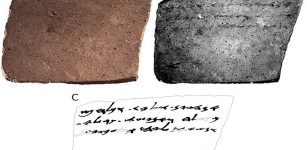 Unseen 3,000-Year-Old Inscription On Biblical-Era Piece Of Pottery Deciphered By Researchers
Archaeology | Jun 21, 2017
Unseen 3,000-Year-Old Inscription On Biblical-Era Piece Of Pottery Deciphered By Researchers
Archaeology | Jun 21, 2017 -
 Merovingian Dynasty Of Long Haired Kings
Featured Stories | Jan 18, 2019
Merovingian Dynasty Of Long Haired Kings
Featured Stories | Jan 18, 2019 -
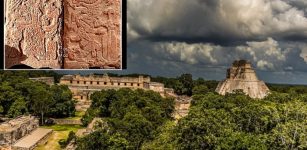 Ancient Maya Stela Carved On Both Sides Unearthed ‘In Situ’ In Uxmal, Yucatan Peninsula
Archaeology | Oct 31, 2022
Ancient Maya Stela Carved On Both Sides Unearthed ‘In Situ’ In Uxmal, Yucatan Peninsula
Archaeology | Oct 31, 2022 -
 Magnificent Alsengem Among 30,000 Archaeological Objects Discovered In Kalmar, Sweden
Artifacts | Mar 5, 2024
Magnificent Alsengem Among 30,000 Archaeological Objects Discovered In Kalmar, Sweden
Artifacts | Mar 5, 2024 -
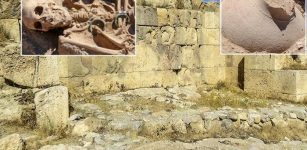 Urartian Noble Woman Buried With Jewelry Found In 2,750-Year-Old Necropolis Of Çavuştepe Castle
Archaeology | Sep 10, 2020
Urartian Noble Woman Buried With Jewelry Found In 2,750-Year-Old Necropolis Of Çavuştepe Castle
Archaeology | Sep 10, 2020

